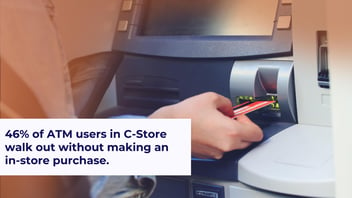The 3 Moments of Truth for Innovation Launches In-Store
Introducing successful product innovation in the relatively noisy and saturated CPG retail environment is both an art and a science, requiring a healthy dose of curiosity and agility to make it big. Eight in 10 CPG executives consider the changing consumer as one of their greatest challenges (Deloitte, 2023), and future-proofing a brand’s portfolio starts by innovating with a strong sense of purpose and understanding of consumers’ evolving needs and values. Still, despite billions of dollars in R&D investments, the best and brightest innovators and product developers on staff, and a booming consumer appetite for product innovation, sometimes, even the best and brightest ideas fizzle in the 11th hour once they reach the shelf. In fact, the failure rate for new products launched by CPG companies is the highest of all industries, even including technology and healthcare (Product Development & Management Association).
What are the root causes of new product failures?
-
Miscalculation of consumer demand or opportunity size
-
The product itself missed the mark
-
The new product introduction was not supported by proper marketing and launch execution
Winning Innovators View New Item Launches Differently, and Play to Win.
The CPG manufacturers who are most forward-leaning and best positioned for continued growth approach a new product launch not as a one-time event, but an extended process, through which they can learn, iterate, and improve. These industry leaders know that even the best ideas often require some tweaks, most of which cannot be fully predicted or planned for until the moment their new item hits the shelves and meets the eyes of their target shopper. Evaluating a product launch requires a broader perspective than one offered by POS data alone.
Given the challenges and uncertainties of in-store execution, it is essential to deconstruct the path to purchase to assess the 3 moments of truth behind the performance of an in-store launch:
-
Exposure Rate: Did you get enough visibility in-store?
Let’s start off with a simple fact: The shopper has to see it to buy it. While your product launch is likely supported by a whole fleet of marketing vehicles, from in-store samples, primary and secondary displays, signage, features, premium shelf placement, promotions, etc., if the shopper exposure rate is low, you can be sure that the total launch performance will fall short of all hopes and dreams. Measuring exposure rate allows you to consider the percent of total store visitors who pass by the product in its various marketing executions.
-
Engagement Rate: Did your in-store marketing hold true stopping power?
Simple fact #2: The shopper can’t buy it if they don’t stop and look at it. This sounds overly simplified until you think about the in-store experience, the amount of visual stimulus a shopper is exposed to, and the level of “autopilot mode” we know shoppers to exhibit. Engagement rate measures the rate at which passerby’s stop and visually or physically interact with your display. This metric empowers marketers to truly understand the impact of their in-store campaign tactics, and design campaigns that are rooted in actual shopper behavior and thus, optimized to drive strongest impact. Sometimes it is as simple as a tweak in signage, where VideoMining has seen up to 300% lift in engagement based on small copy tweaks.
-
Conversion Rate: Did the item make it in the basket?
Once you have exposed and engaged the shopper, you are only inches away from the big metric that matters most: the conversion. This metric considers the behavior of shoppers who have already noticed the new product and have invested time in interacting with it. This provides feedback on the effectiveness of packaging and promotions, along with product attributes themselves. Even looking closer at non-buyers in this moment can be extraordinarily useful, as you can start to diagnose the barriers to the trial purchase and test and learn your way to stronger conversions.
Actions Speak Louder Than Words
In-store testing through observational research can unlock insights that will drive innovation pipelines and empower trade and shopper marketing teams to support product launches with in-store campaigns designed to win with shoppers in their true moment of choice.
At VideoMining, we’re passionate about unlocking insights around the actual behaviors of shoppers through AI-powered observational research. We look beyond what shoppers say they’ll do, or report back they did, to analyze the most raw and true version of evidence: their actual actions and behaviors using a large sample (often in 100s of millions of store trips). This provides a one-of-a-kind perspective that is rooted in fact, not theory. Interested to see what behavioral insights can unlock for you? Drop us a line: solutions@videomining.com





